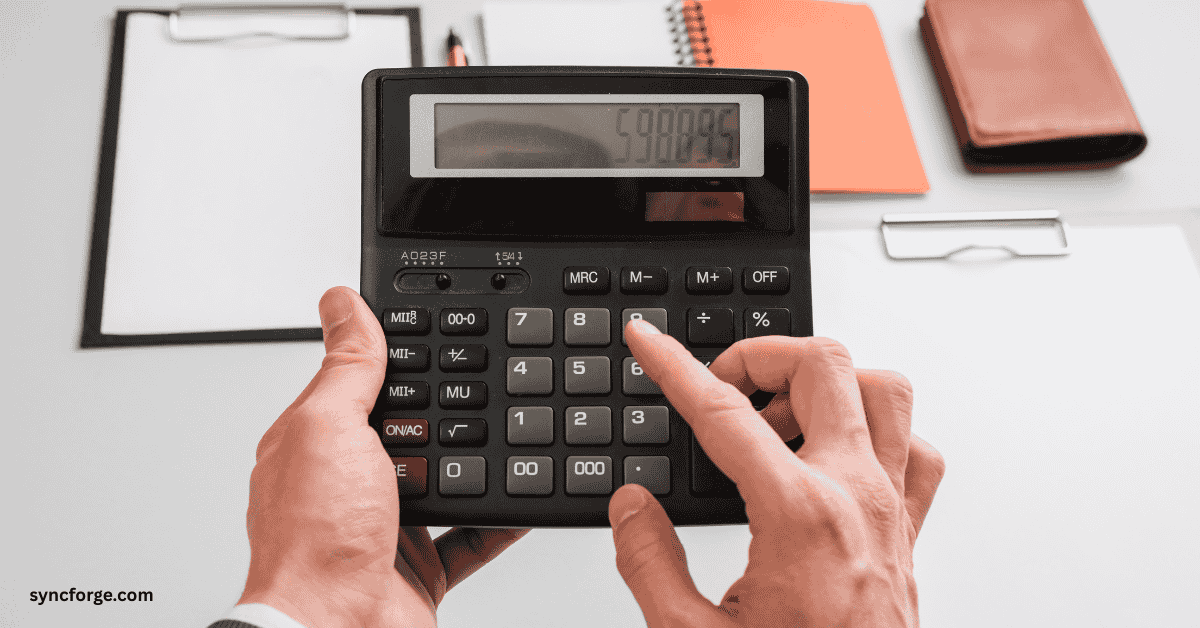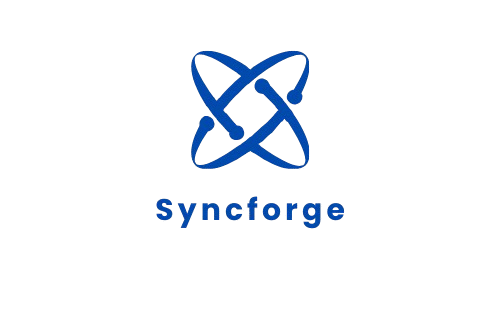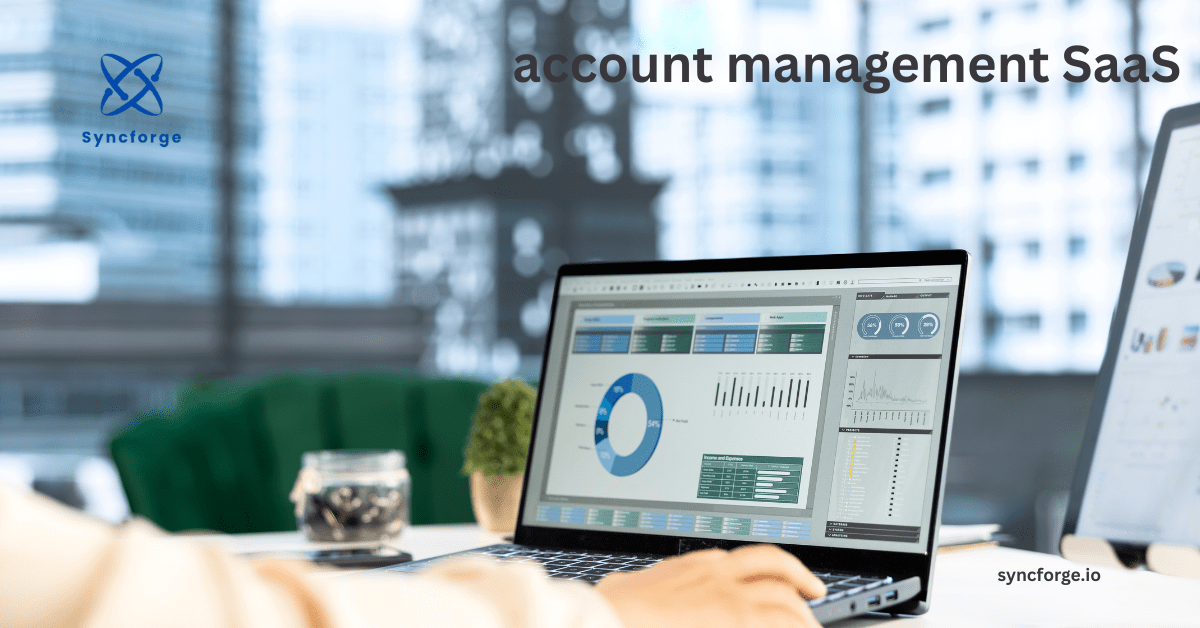SaaS Pricing Calculator–Maximize your revenue in 2025

Introduction:
Pricing is the linchpin of every business, particularly in the SaaS sector. Even a world-class product cannot promise success without strategic pricing. It directs the company and determines whether the growth thrives or the business is prone to sinking in a competitive sea. The SaaS pricing calculator helps agencies to make data-driven decisions by aligning pricing with market value and the target audience. This calculator is specially designed to facilitate founders, product managers, and agencies to tailor their product pricing in accordance with subscription models, cost analysis, and profit margins.
This guide will expand your knowledge on:
SaaS pricing calculator, its Importance for SaaS startups & enterprises, Key criteria for accurate pricing, Core components, benefits, examples, & popular tools of the calculator
This guide will enable you to set the pricing of your product with confidence and clarity.
Introducing SaaS Pricing Calculator
A SaaS pricing tool is a digital tool or financial model designed to assist software companies in determining optimal pricing structures for their services.
The SaaS pricing calculator considers all of the following metrics:
- Customer Acquisition Cost (CAC)
- Lifetime value (LTV)
- Churn rate
- Hosting & Infrastructure expenses
- Desired profit margins
It acts as a financial compass that helps you opt for the most suitable pricing strategy, which maximizes the growth and profitability of your business. Guessing and copying competitors doesn’t make you stand out in the market.
Why SaaS Pricing Matters
Pricing is often overlooked by businesses, and the limelight is given to customer acquisition. However, pricing is the growth lever, as ProfitWell research suggested that pricing has a bigger impact on turnover than retention or acquisition. Many businesses have no idea what to charge for their product, and they just make a shot in the dark or copy their competitor, and the value gets compromised.
The following key reasons illuminate the significance of pricing:
First Impression:
First and foremost thing that customers look for is price. Your product value is judged by its price tag. If your product value is too low customer subconsciously perceives that the product is not skillful; on the other hand, if the price is too high, the customer gives up without even testing. The SaaS pricing calculator does the needful for you by positioning your product at the sweet spot by converging willingness-to-pay and value perception.
Scalability:
Pricing defines whether the expansion of your product is happening profitably. In a usage-based model, your revenue grows with the user consumption. Calculator empowers you to experiment with different scaling paths such as tiered plans, usage pricing or hybrid models.
Profit Margins:
In SaaS, it is possible to grow, even when losing money. Your user base can grow at the expense of your profit, but this is foolish. No business wants this. The SaaS pricing calculator does its duty by calculating the cost of infrastructure, support, and ensuring that your SaaS falls in the ideal range of 60-70 % of gross margins.
Market Positioning:
Pricing is not just numeric. It introduces you to the customers who you are. For example, if your product price tag says $9/month, they would see you as affordable and accessible. Similarly, other product charging $699/ month signals their premium value and that it is for enterprises. Your price defines your brand identity.
Core Components of a SaaS Pricing Calculator

While designing or using a SaaS pricing calculator, make sure that it includes all the following elements; otherwise, it will lack reliability:
Customer Acquisition Cost (CAC):
CAC is defined as the total cost spent to convert a user into a paying customer. High CAC rate eats resources at a high pace,e, whereas an efficient CAC indicates sustainable growth of the product.
It can be calculated using this formula:
CAC = Total Sales & Marketing expenses ÷ Number of new customers gained
For example: If your business spent $10,000 on marketing and sales and has won 100 new customers, then your CAC is 10,000/100= $100
Which means you are winning one new customer for $100.
Why it matters: To evaluate the profitability of your product, CAC is compared with LTV to see whether the customer acquisition cost is paying you back or is it justified?
Customer Lifetime Value (LTV):
It is the total expected revenue a customer adds to your account over the entire duration of their interaction with your product. It signals if your product can afford to scale up powerfully or needs controlled and steady unit economics.
It can be calculated by:
LTV = (Average Revenue per User) X (Average customer lifespan)
For example, if the user is generating $30 revenue per month, and he is expected to spend 24 months with the product, then his LTV is 30 x 24= $720
It is quite high in comparison to the CAC, which was 100. Why it matters: The SaaS pricing calculator estimates how shifts in churn rate or pricing tier will impact the overall customer value.
LTV: CAC Investors and operators both run after it. It is considered the benchmark to evaluate how a product is performing in the market. It measures how efficiently spent dollars are coming back towards the product.
Higher LTV from CAC is a thumbs-up for your product’s growth. The ideal LTV: CAC is 3:1
For example: If your CAC is $120 and LTV is $720, then LTV: CAC = 720:120 i.e., 6:1, which means that you are generating 6 times more than you are spending.
Churn Rate
It is the rate at which customers are cancelling their subscriptions or are not purchasing new ones. It swallows your growth curve silently.
Its formula is:
Churn rate= (Customers Lost ÷ Customers at Start of Period) × 100
For example, if you have started with 500 customers and have lost 25 in a month, then your churn rate is 5%. High churn rates indicate a decline in your growth and are nightmares for the owners.
Why it matters: Churn rate is inversely proportional to LTV; a small increase in the churn rate shrinks the LTV. So, the SaaS pricing calculator allows you to timely stimulate retention strategies.
Gross Margins:
This profitability metric refers to the money that the company retains after subtracting the cost of expenses spent on producing and selling its goods or services.
It can be calculated by:
Gross Margin = (Revenue – Cost of Goods Sold) ÷ Revenue × 100
70% to 80% are considered ideal SaaS margins. Investors raise eyebrows at anything less than 60%.
Why it matters: A Calculator evaluates if your product’s growth is sustainable by taking into account third-party integrations and hosting.
Pricing Tiers:
One strategy fails to fit all the customers because not every customer is looking for the same thing. Some need low-cost, whereas others demand premium features. So, there is no golden rule to follow. A calculator helps to design tiered plans for each segment separately and optimize ARPU.
For example, Slack feeds the needs of every segment by offering Free, Pro, business+, and enterprise grid models. Such plans encourage both entry-level adoption and enterprise monetization.
Why it matters: SaaS businesses have to tailor their strategies according to the targeted segment; otherwise, they will remain in a continuous tussle between either leaving money on the table or frightening off price-sensitive customers.
Market Benchmarks:
In the SaaS atmosphere, it is dangerous to copy your competitors, but ignoring them is even more destructive. Inadequate knowledge of market prices and trends can push you back in the race. Try to charge according to your value proposition, but don’t swim against the current.
For example, if the market average for CRM software is $30-$40 per month, but your calculator is showing that you can generate profit even at $30, then you have a pricing edge over the market.
Why it matters: Benchmarking makes sure that your price is aligned with customer expectations while adding value to the product.
Popular SaaS Pricing Models You Can Calculate
SaaS pricing has different models because one-size-fits-all is not applicable here. SaaS pricing calculator helps to imitate these models and predict their revenue impact. All of the following models can be tested using the pricing calculator, and the best one can be selected:
| Pricing Model | Definition | Example Companies | Best For | Limitations |
| Flat-Rate Pricing | One fixed price for all features and users | Basecamp ($99/month) | Simple SaaS tools with broad appeal | Limited flexibility may underserve/overserve |
| Tiered Pricing | Multiple plans with escalating features or limits | Slack, HubSpot | Segmented markets, upsell opportunities | Too many tiers can confuse customers |
| Per-User Pricing | Charges based on the number of active users/seats | Zoom, Microsoft Teams | Collaboration tools, predictable scaling | Can discourage company-wide adoption |
| Usage-Based Pricing | Charges tied to actual consumption (API calls, storage) | AWS, Twilio | Infrastructure SaaS, scalable products | Revenue is less predictable, harder to forecast |
| Freemium → Paid Upgrade | Free entry plan with paid premium features | Dropbox, Canva | High-volume user acquisition | Low conversion rates without a strong upgrade path |
| Hybrid Models | Combination of tiers, usage-based, or add-ons | Salesforce, Notion | Products serving diverse customer bases | Complexity in communication and billing |
How to Use a SaaS Pricing Calculator (Step by Step)
- Input your costs:
Insert all your expenditure, from sales and marketing spend to hosting, R&D, and support. Don’t forget to document your active customers, ARPU, and churn rates at the current stage.
- Define your growth goals:
Set a clear goal to achieve. Whether you are aiming for faster adoption, higher ARPU, or improving gross margins. Set one clear objective at a time for optimal results.
- Select a pricing model:
Among all pricing models, shortlist two or three candidate models and then opt for the one that matches to your objective perfectly. For example, usage-based, hybrid, or flat
- Forecast revenue and Churn:
A calculator assists in projecting financial performance by indicating both growth and risks. Keep a close eye on MRR (Monthly Recurring Revenue), ARR ( Annual Recurring Revenue), and churn rate( decline in subscriptions) to track your performance.
- Validate with customer feedback:
Customer feedback is as crucial as pricing in the process. Don’t forget to gather user responses through surveys. Stay updated about how they feel about your product. Use A/B testing on your pricing page to see what suits them best.
Benefits of Using a SaaS Pricing Calculator
SaaS pricing calculator frees you from many headaches: Some benefits are listed below:
- It prevents underpricing or overpricing by calculating LTV: CAC
- It saves your hours and energy by skipping guesswork
- It helps you to align your pricing strategy with customer value
Popular SaaS Pricing Calculators & Tools
Choosing the right tool to perform your calculations is equally important as choosing the best pricing strategy. Here are a few suggestions along with their functions:
| Tools | Key Features | Best For |
| ProfitWell Pricing Calculator | Customer willingness-to-pay analysis, tailored recommendations | Optimizing pricing tiers and packaging |
| Baremetrics | Revenue forecasting, churn tracking, subscription insights | Tracking growth and visualizing revenue impact |
| ChartMogul | Advanced SaaS analytics, MRR and ARR tracking, cohort analysis | Measuring long-term pricing performance |
| SaaSOptics | Finance and billing automation, revenue recognition | Scaling companies need financial accuracy |
| Custom Excel/Google Sheets Models | Flexible, customizable, no cost | Early-stage startups testing basic scenarios |
Mistakes to Avoid When Using SaaS Pricing Calculators
Don’t fall into the trap of the following:
- Do not copy your competitors’ prices. When you have value differentiation
- Do not ignore the Churn impact
- Do not use outdated CAC/LTV data; continuously update your model with the latest data
- Do not overlook customer psychology, as value matters as much as cost
- Do not overcomplicate your tiers with so many options
Wrapping Up:
A SaaS pricing calculator isn’t just an ordinary tool; it’s a growth engine that drives your business towards success. It helps you to maximize your turnover by setting valuable prices and leaving your competitors in the dust.
If you are a B2B SaaS founder, an agency offering SaaS solutions, or a startup looking for funding, grab your hands of the SaaS pricing calculator to attain a strategic advantage over others.
Frequently Asked Questions:
Is the SaaS pricing calculator optional or mandatory?
It is a mandatory tool for SaaS businesses, whether they are just entering the market or are established.
How many times should I update my pricing strategy?
It is not a one-time decision. You must update it every 6-12 months, depending upon your churn rate or customer feedback
How can I build my own SaaS pricing calculator?
There are professional ways, but many founders use Excel or Google Sheets tailored to their needs
What does 2:1 in LTV: CAC indicate?
It means you have generated twice what you spend, but it is considered inefficient and signals room for improvement.
Should I offer a free trial or a freemium?
It depends on your product complexity, but it is better to take help from a calculator, it can simulate both models for you.
CTA: Stop guessing and start calculating with the SaaS pricing calculator today! Explore more about SaaS on Syncforge.
Use Calculator:




